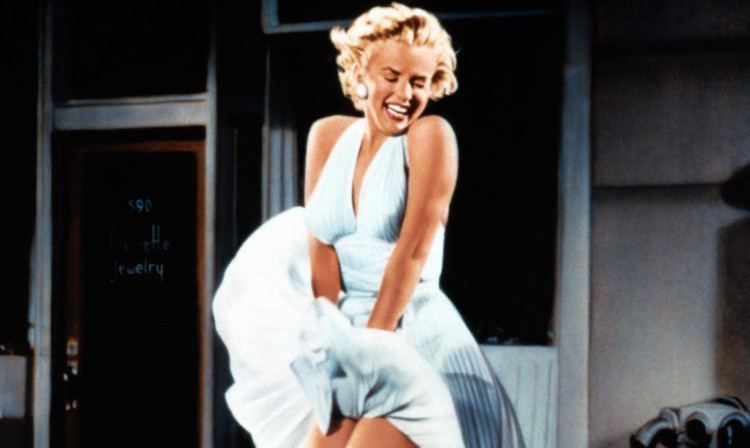
The many faces of Marilyn Monroe.
There’s no argument that Marilyn Monroe was a true icon of the 20th century.
The blonde bombshell was famous the world over and provided us with one of the most famous images of all time when her white dress was blown upwards on the New York sidewalk.
But there’s one area of fierce debate when it comes to Hollywood’s biggest star. Could Marilyn Monroe actually act? The jury’s still out on that, although Marilyn herself certainly wasn’t sitting on the fence.
She said: “I knew how third rate I was. I could actually feel my lack of talent, as if it were cheap clothes I was wearing inside. But my God, how I wanted to learn, to change, to improve!”
That flies in the face of many who feel quite the opposite.
And when you realise the “Yay” camp includes some of the most revered actors as well as the most influential acting coach of all time, you feel Marilyn may have been selling herself short.
Marilyn probably suffered from the fact she started out as a model before being spotted by Hollywood. And that’s no guarantee of talent.
A big problem is that she’s most famous for being a sex symbol and for her “dumb blonde” roles in classics such as How To Marry A Millionaire and Some Like It Hot.
People forget it takes no little skill to pull that off both convincingly and sympathetically, which Marilyn did with aplomb Some Like It Hot earning her a Golden Globe.
When she was still plain old Norma Jeane, she’d been working spraying aeroplane parts in a munitions factory when she was spotted by a photographer snapping women helping the war effort, who encouraged her to apply to the Blue Book Modelling Agency.
There she was told they were looking for models with lighter hair and so the famous platinum blonde look was born.
She became one of the agency’s most successful models and came to the attention of 20th Century Fox who, after a screen test, signed her to a six-month, $125-a-week contract, with one executive enthusing: “It’s Jean Harlow all over again.”
But things didn’t work out at Fox, nor at Columbia, and Marilyn returned to modelling until her performance in the 1950 John Huston movie The Asphalt Jungle drew rave reviews and she went back to Fox.
That was almost scuppered when nude pictures she’d posed for back in 1949 resurfaced but Marilyn herself suggested how the studio should handle the scandal point out she’d only done them as she had no money to pay the rent.
That, plus subsequent revelations about her tough upbringing in and out of foster homes, produced a surge of sympathy and no one batted an eyelid when she was both Playboy’s first cover star and first Playmate of the Month in December, 1953.
But still the question lingered could she act?
Marilyn began to answer that when she played a scheming femme fatale in the film noir melodrama Niagara, which also after much experimentation fixed the look she’d use for most of her career.
Something else that would become a fixture for the rest of her life surfaced, too stage fright. The director noticed, and assigned her make-up artist Whitey Snyder to spend hours gently coaxing and comforting Marilyn before each scene.
In her next movie, Gentlemen Prefer Blondes, co-star Jane Russell realised this was why she was habitually late for filming and began to escort her from her dressing-room to the set.
Despite the huge success of The Seven Year Itch, Marilyn was fed up with being typecast and offered poor parts and that convinced her to leave Hollywood and spend a year studying under the legendary Lee Strasberg, founder of the Actors Studio in New York.
He was the father of “method acting”, the famously-intense approach taken by Hollywood heavyweights such as Brando, Hoffman, De Niro and Pacino.
And Strasberg later said: “I’ve worked with hundreds of actors and actresses and there are only two who stand out ’way above the rest. No 1 is Marlon Brando, and the second is Marilyn Monroe.”
Strasberg’s wife Paula became Marilyn’s acting coach for the rest of her career and she received her best reviews for her next two movies, dramatic roles in Bus Stop and The Prince And The Showgirl.
Her co-star in the latter, Laurence Olivier, resented Strasberg, whom he considered a fraud whose only talent was to “butter Marilyn up”.
But our greatest thespian knight said of the lady herself: “A brilliant comedian, which to me means she’s also an extremely skilled actress. Marilyn was quite wonderful, the best of all.”

Enjoy the convenience of having The Sunday Post delivered as a digital ePaper straight to your smartphone, tablet or computer.
Subscribe for only £5.49 a month and enjoy all the benefits of the printed paper as a digital replica.
Subscribe